
The National Museum of Organized Crime & Law Enforcement, or The Mob Museum, is a centerpiece museum destination headquartered in Las Vegas’ former federal courthouse. It has been named one of TripAdvisor’s Top 25 Museums in the United States and is accredited by the American Alliance of Museums.
Three floors of interactive exhibits, historic artifacts, and immersive displays showcase both the local and national history of organized crime from the Prohibition era to the present. The collection includes one-of-a-kind artifacts like Chicago’s famous St. Valentine’s Day Massacre wall alongside immersive experiences like a simulated forensic crime lab.

Gold Addy Award
for Prohibition Microsite
20,000
Additional Visitors
for the Underground
within 8 Months
Record-breaking
attendance of
360,000
Museum Visitors
from around the world
“Cardwell Beach helped us turn vision into reality and made the entire creative process a seamless one.”
— Ashley, Senior Director of Marketing, The Mob Museum
Ultimately, our efforts shaped nearly every public-facing piece of the Museum’s marketing efforts and connected with both long-time locals and first-time visitors alike, including:
Naming and launching new exhibits
Leading a complete website overhaul
Creating two new advertising campaigns for local and national markets
Updating the museum's membership program
Refreshing museum collateral
Launching an award-winning microsite and online game
Developing a long-form promotional video
New
The Underground
Speakeasy & Distillery
Website Overhaul
Experience the Mob in the heart of Downtown Campaign
Where Your Vegas Trip is MADE Campaign
Driving Membership
Driving Sponsorship
Prohibition Microsite and Game
Overview Video
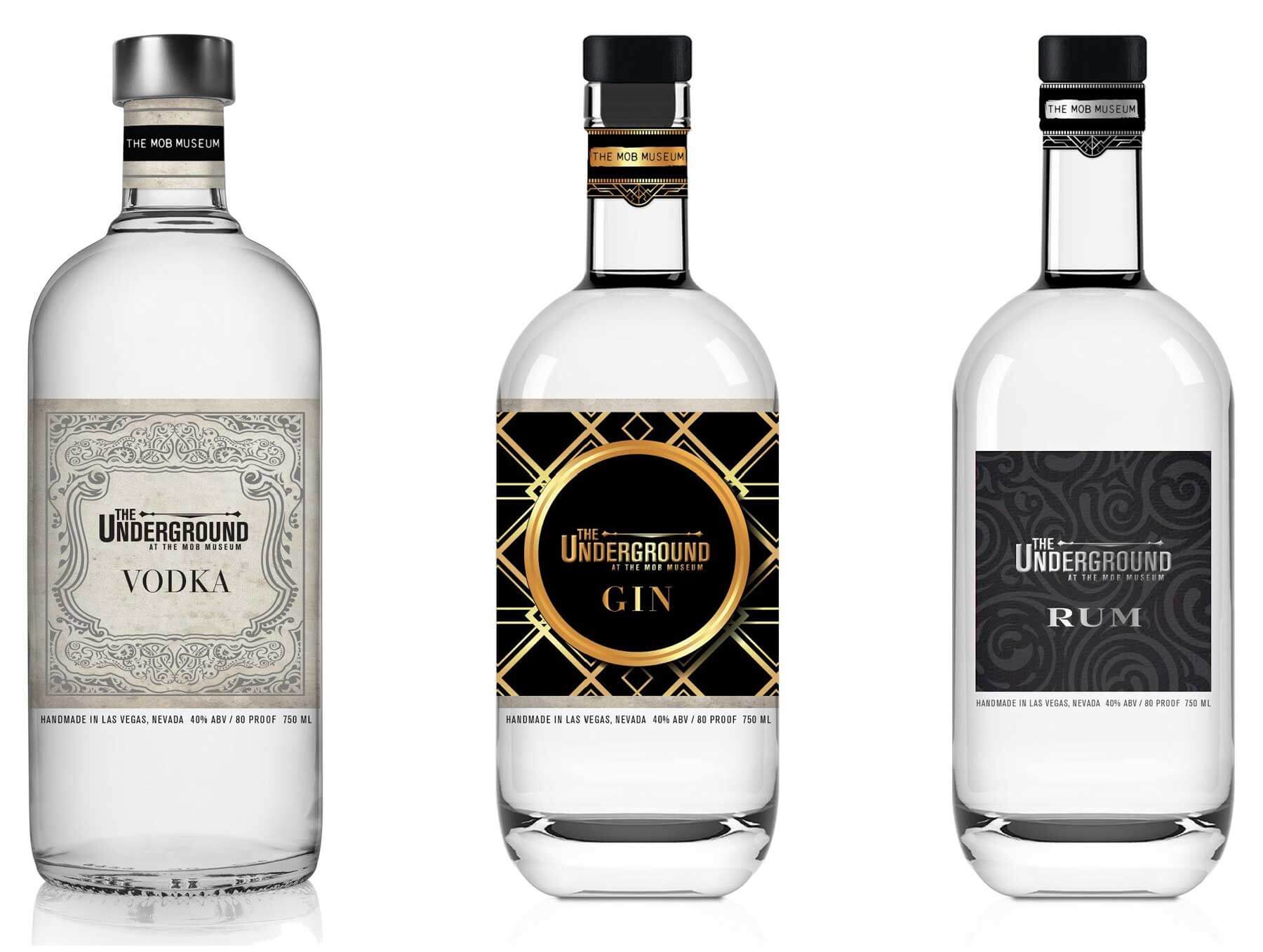

After successfully overhauling their advertising and outreach campaigns, we were asked by the Museum to help launch their new on-site speakeasy, distillery, and exhibition on Prohibition.
This multi-million-dollar effort ushered visitors into a totally immersive experience, complete with a password-protected speakeasy, a full bar with authentic spirits made on-site, and artifacts and exhibits. We were tasked with developing cohesive messaging and visuals that sparked visitor interest and connected with real history.
Our team conducted historical research, led branding exercises, and plumbed customer insights to develop a name for the space— “The Underground”—and even design the labels and packaging of the in-house spirits from the distillery, the cocktail menus, and the grand unveiling invitation.
To help raise visitor awareness of the new space, we designed a full range of marketing and advertising campaigns, ranging from print and digital to billboards and bus wraps. Then, to help jumpstart attendance to the new space, we redesigned, reconfigured, and relaunched their website to better reflect these new visitor offerings.
To help raise visitor awareness of the new space, we designed a full range of marketing and advertising campaigns, ranging from print and digital to billboards and bus wraps. Then, to help jumpstart attendance to the new space, we redesigned, reconfigured, and relaunched their website to better reflect these new visitor offerings.

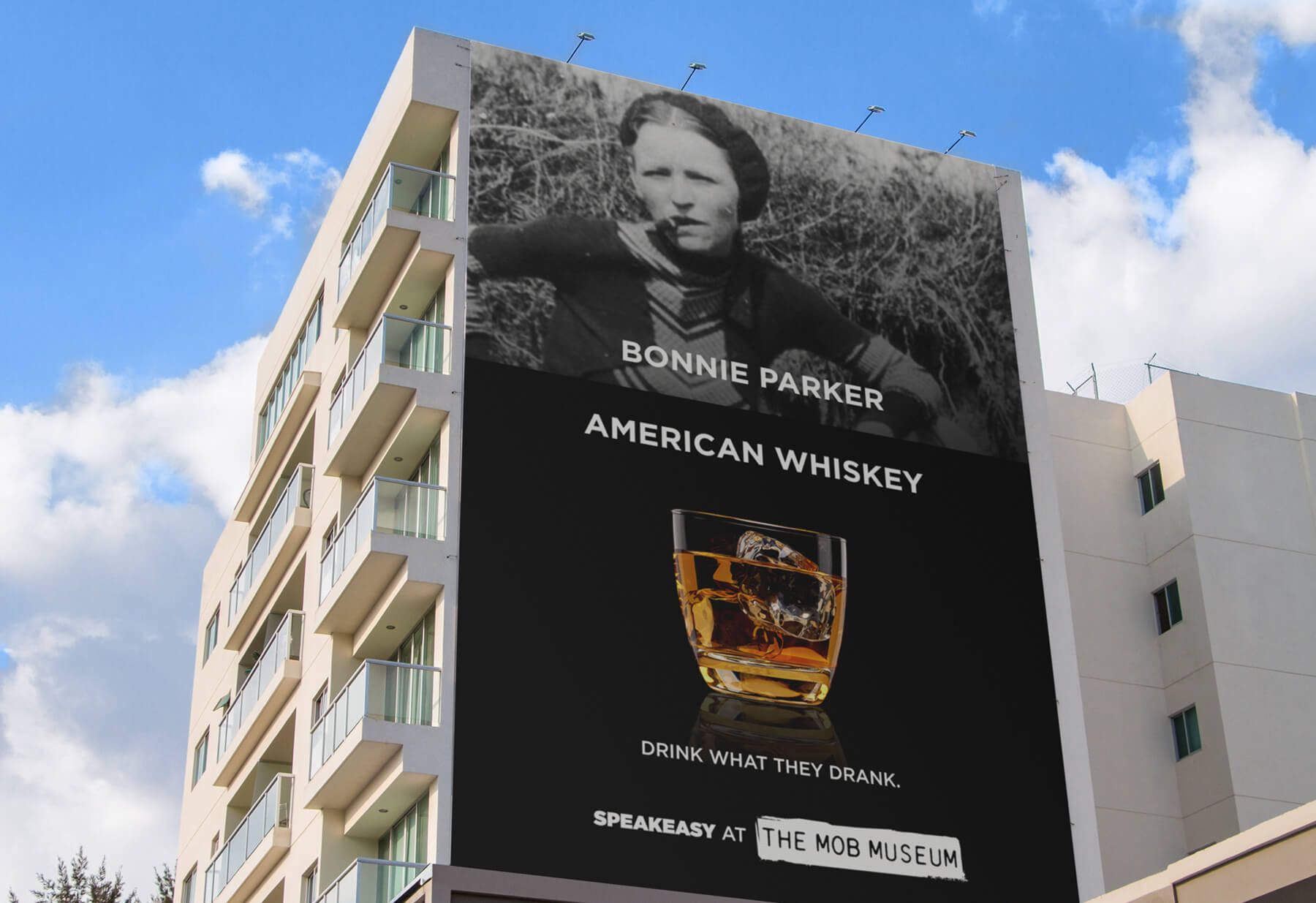

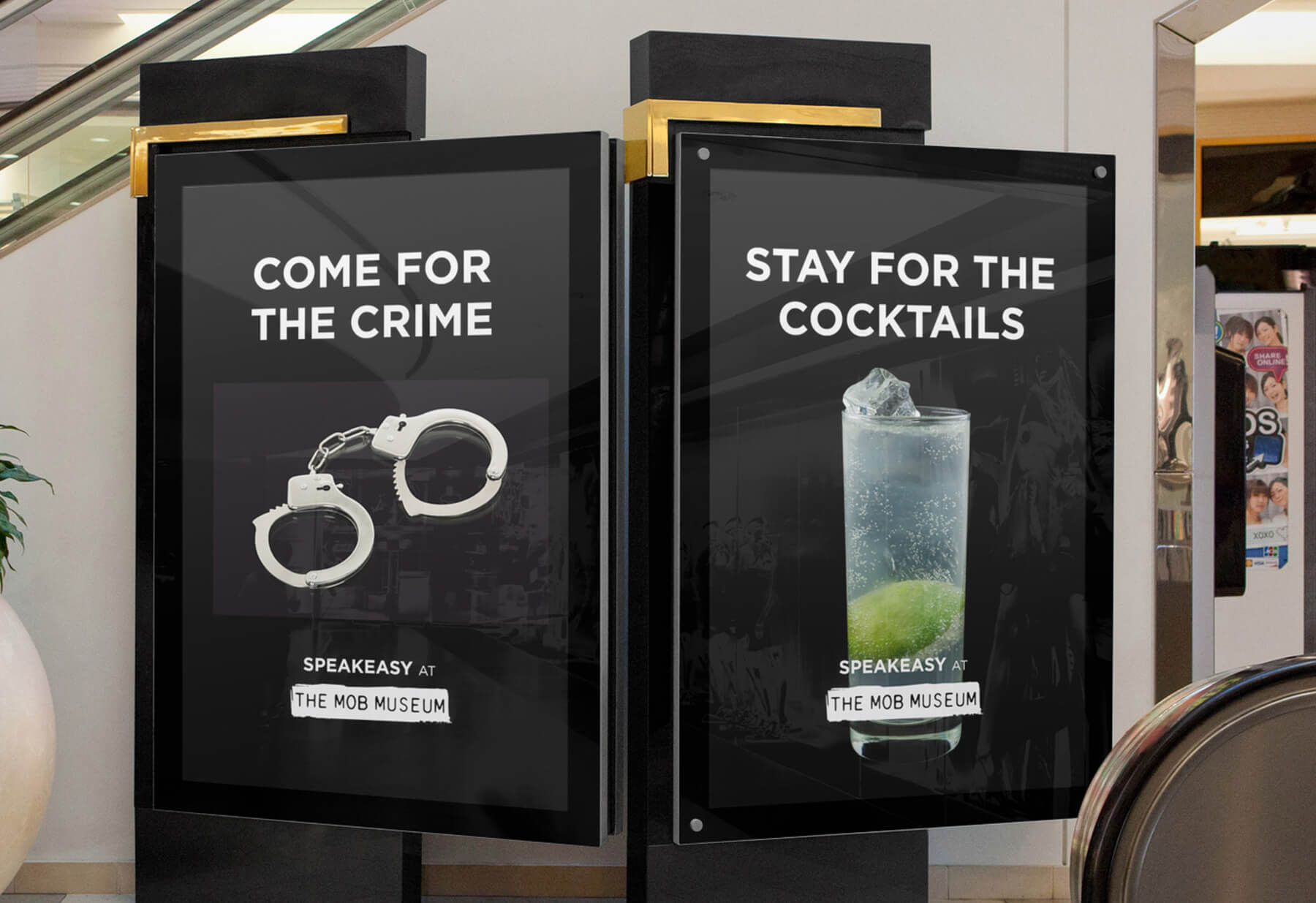

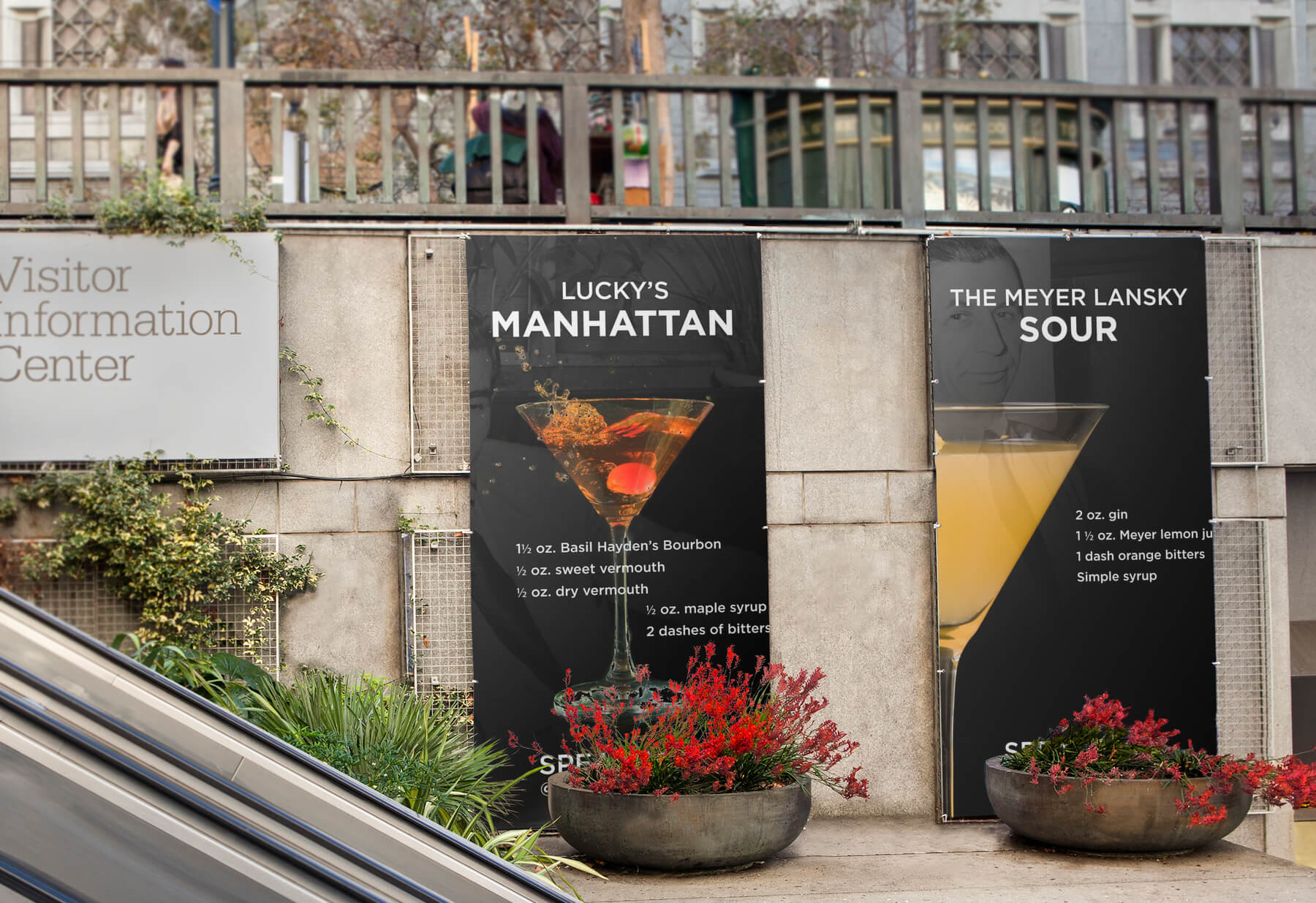

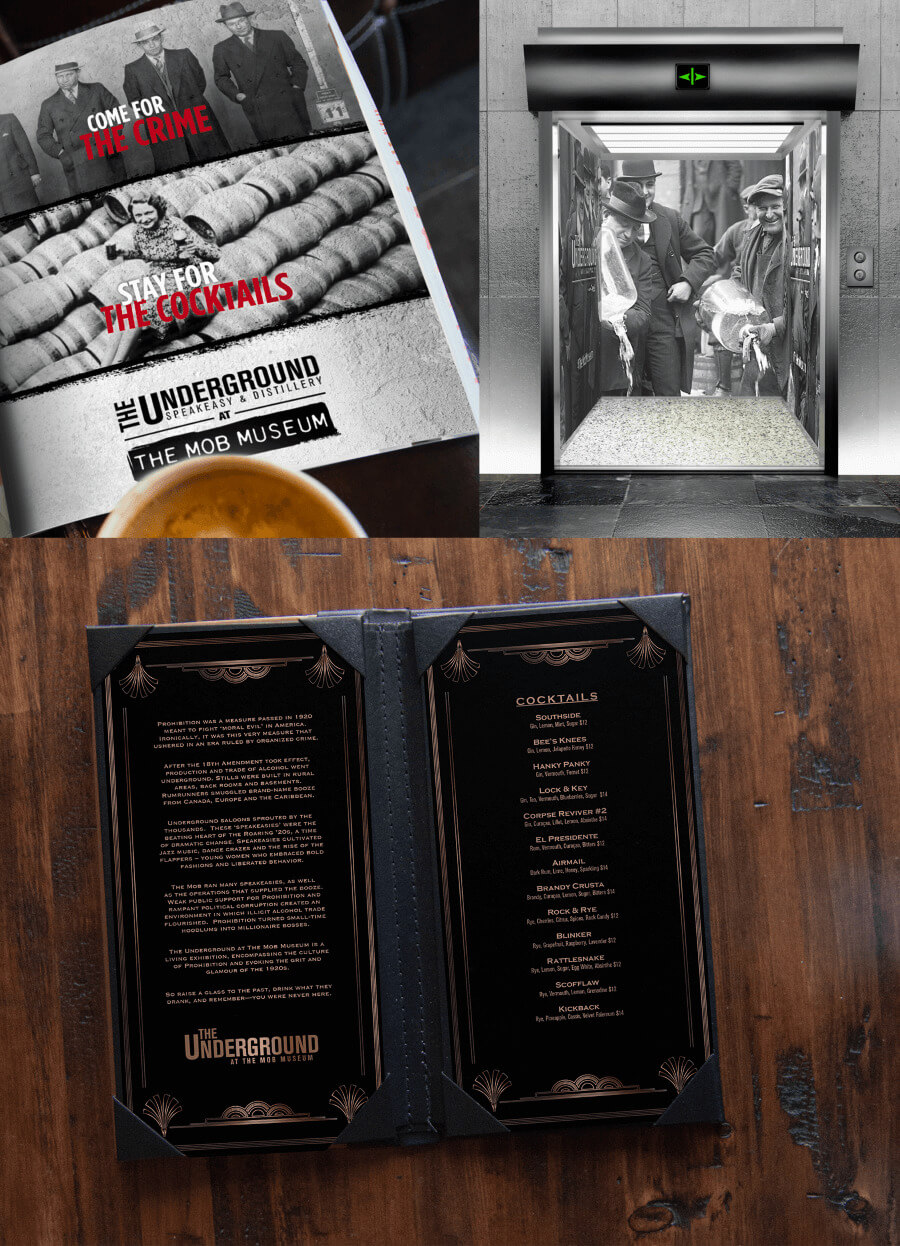

Behind The Scenes:
Speakeasy Visual Branding
One of the most rewarding aspects of working with a world-class museum is the historical research that goes into every phase of launching and marketing a new exhibit.
For our print ads focused on this new exhibit, we included recipes for the actual favorite cocktails of notorious mob bosses. We plastered the elevators to the new exhibit with real archival photography from Prohibition-era parties. And for The Underground itself, we ensured the visual branding reflected the Roaring Twenties of reality, not just fantasy.
To start, we studied typography and layout of that era for both the cocktail menus and spirit labels. We used reference art to identify the way printed materials would have looked at that time, then sourced antique textures to give all the new design elements an aged, dated look and feel.
In designing the cocktail menu, we experimented with fonts, textures, and materials including leather, etched copper, brushed steel, and gold foil before selecting designs robust enough for a bar. The final look of the menus, which incorporated metallic finishes, linked the physical item back to the interior design of the speakeasy and distillery, which used copper as a primary metal. The inside pages were laid out in an Art Deco style, reflective of the Prohibition era.
Each bottle was also strung with a hang tag featuring historical information about each spirit, proving that immersive learning didn’t need to stop when the drinks began.
To promote the new space and welcome guests to its grand unveiling, we created an invitation using a historic grille cipher, a simple decoding method that revealed a mystery message by sliding a pre-cut envelope over the invitation.
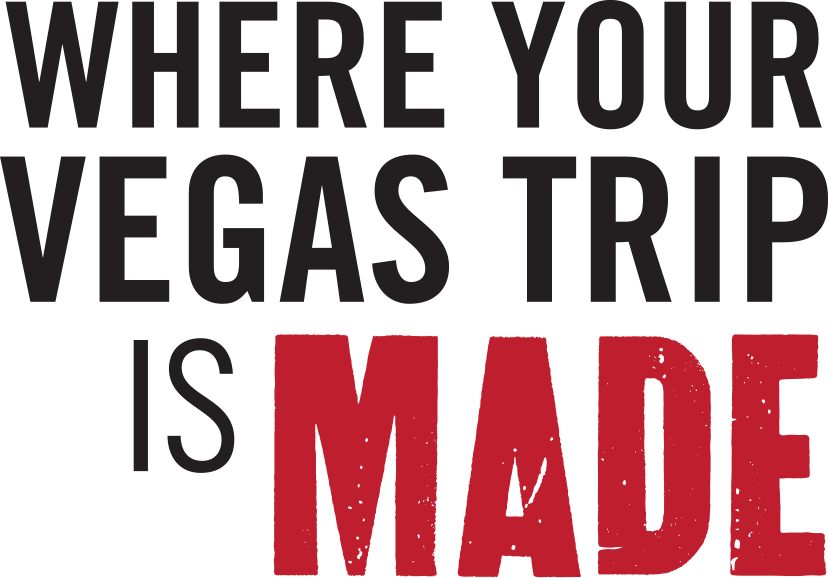

When most people think of Las Vegas, they imagine a tourist playground anchored by the casinos and shows of the Strip. But The Mob Museum knew that the city was far more complex, historic, and multifaceted than this picture, and wanted its advertising to move beyond that of the typical “Vegas attraction.”
We agreed—and emphasized that all good outreach begins with a deep understanding of audiences. Studying visitor trends and membership statistics, we identified our two key visitor groups, then began to develop creative concepts that spoke directly to them.
For out-of-town visitors, we created the “Where Your Vegas Trip is Made” campaign, playing on the double meaning of “made” within Mob culture. This campaign would feature more direct images and messaging about organized crime history so visitors unfamiliar with the Museum wouldn’t miss the theme.



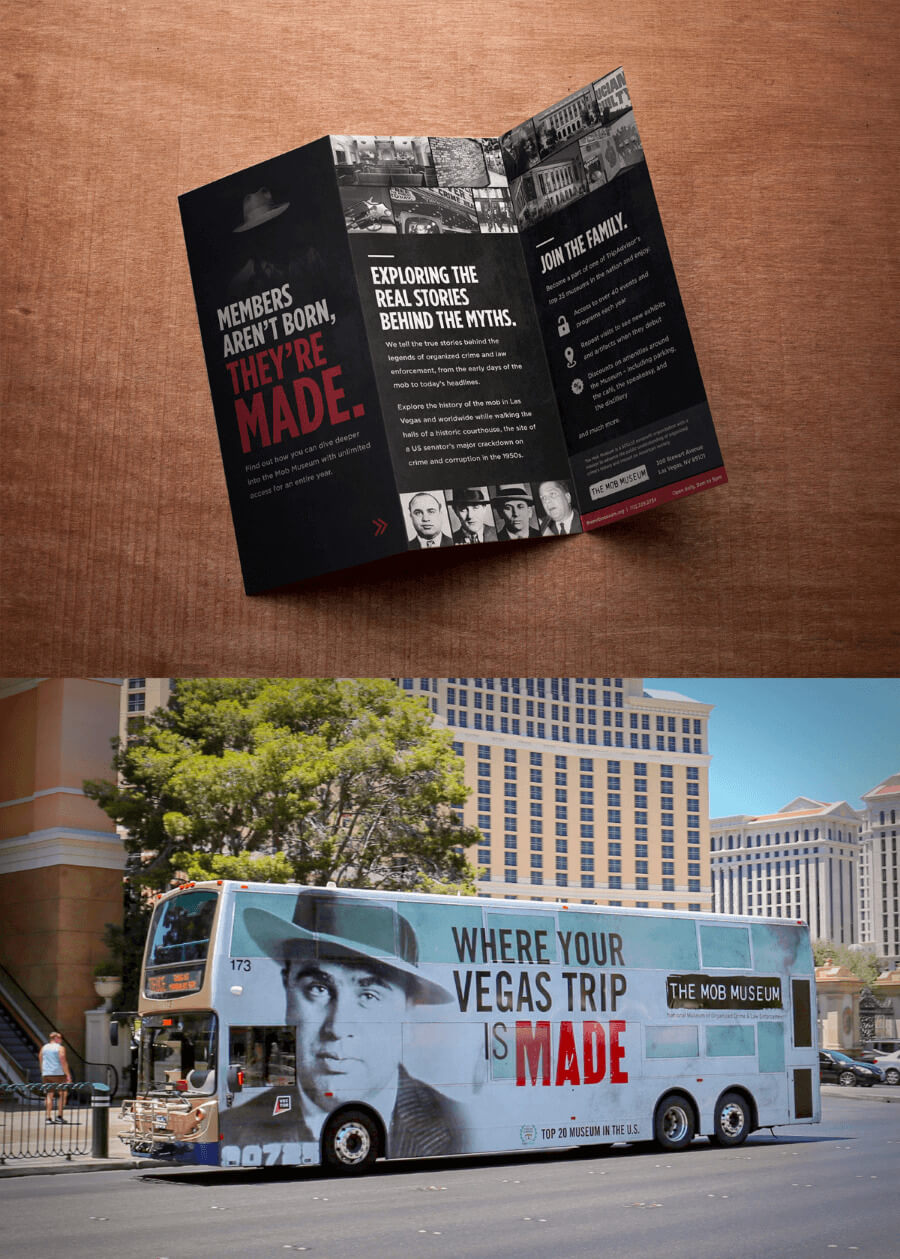

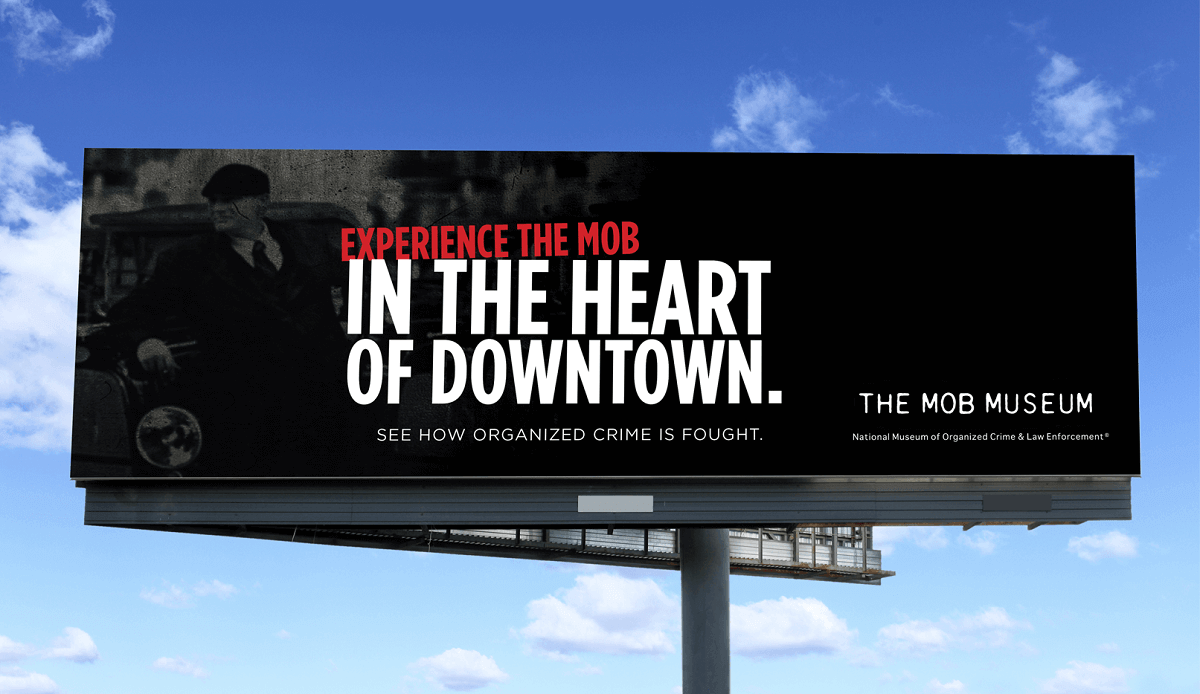

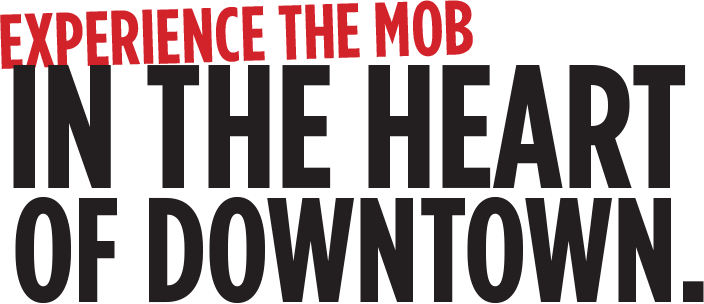

For locals, we created the “Experience the Mob in the Heart of Downtown” campaign, anchoring the Museum in a real location familiar to most area residents. By pairing this location with real Vegas history, we made a sometimes overlooked core of the city relevant and intriguing even to long-time Las Vegans.
Driving Membership
The Mob Museum had a healthy membership program that attracted supporters back to explore new exhibits each year. But the existing membership experience felt disconnected from the brand of the Museum as a whole.
We wanted Mob Museum members to feel they were part of an exclusive club, understanding that the Museum valued their financial support and rewarded them with a “members only” experience.
This led to the creation of entirely new membership collateral, from redesigned brochures to specially-issued “Made Member” cards, tote bags, and even lapel pins that had a visual style in keeping with the Museum brand. We echoed that theme in a series of advertisements that played up the secrecy and mystery of the Museum’s membership program.
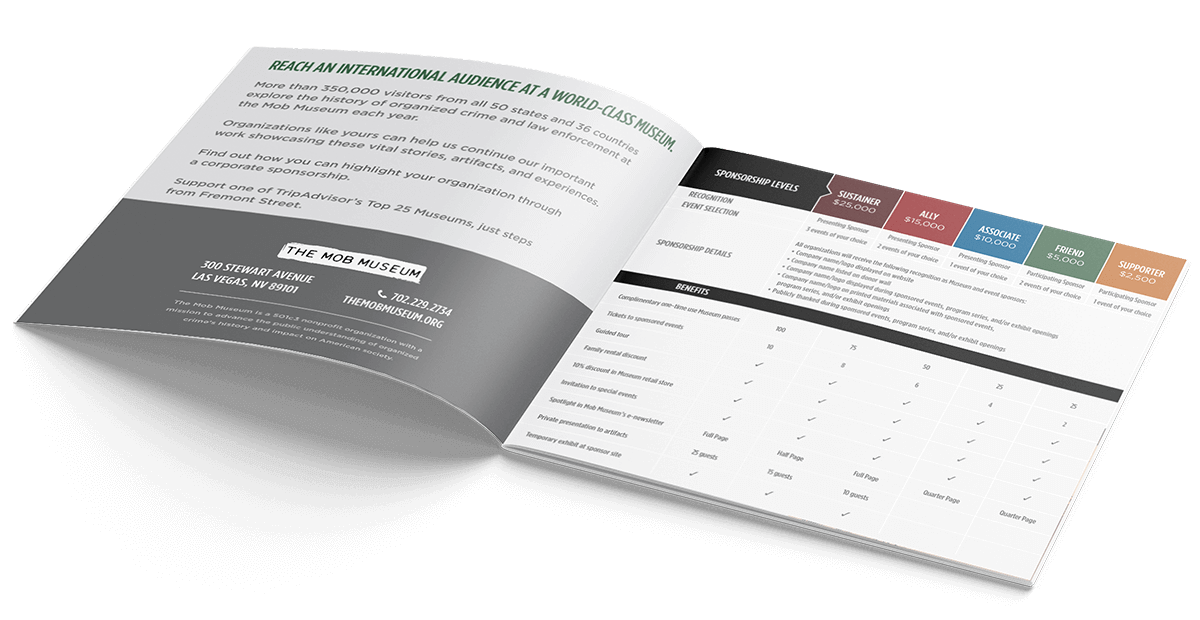

Prohibition Microsite and Game
The Mob Museum wanted a full range of approaches to sharing the stories behind its collections, so we turned to the web to complement their physical exhibits. Designing, testing, and building a microsite dedicated to the history of Prohibition required close collaboration with the Museum’s curators, who provided us with deep research and resources.
We focused on building a site that would work across platforms and reach audiences on the devices they already used every day. The microsite ultimately captured public imagination around a captivating era in history and drove ticket sales to the Museum. Our work on the site was honored with a gold ADDY award in 2017.
Behind The Scenes: “Prohibition: The Game”
Our design team has fond memories of early video games like Frogger, where simple graphics were brought to life through fast-paced gameplay. We wanted to create something similar for The Mob Museum.
Our creative team ran with the idea, sketching out the idea for a racing game where elements like speed bumps, cop cars, and bouncing booze barrels would add fun twists.
Armed with creative inspiration, our development team identified a mobile-friendly framework to run the game, then created a series of background “skins” to display during gameplay. After some iterations, we decided on a top-down viewpoint that would unfold over the streets of a fictional 1920’s gangland city.
Because we wanted a smooth experience for the player, we didn’t want backgrounds to repeat, so we designed more than 10 “city blocks” for the truck to pass. To help evoke the era, we desaturated the backgrounds and added textures to the in-game icons. Finally, we made sure the game could be played on both desktop and mobile by making it compatible with both keyboards and swipe gestures on a phone screen.
Overview Video
Utilizing archival footage and images from inside the museum, we crafted a brief promotional video that highlighted the museum’s story, new exhibits, and immersive history.
